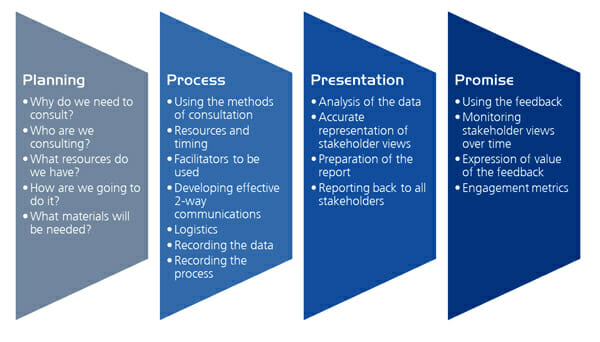One of the first things we learn in business is the importance of “having a plan.” Preferably, it should be a strategic plan, complete with milestones, action items, KPIs, and other important measures. This is definitely true. You need to have a plan, and you need to be socializing strategy.
As someone who’s been in the consulting game for many years, I can’t count the number of times I’ve sat down with new clients only to discover that while there may, in fact, be a carefully (and expensively) constructed strategic plan, it’s a mystery to most employees. Chances are, they learned about the strategic plan via an online WebEx, saw some slides, listened to an executive talk, participated in some Q&A, and called it a day—and then promptly forgot the whole thing and went back to business as usual.
There’s a better way of socializing strategy—it comes down to following a few key principles and practices.
Step 1: Alignment
Align the entire leadership team on the key initiatives that’ll be required to execute on the strategy. The initiatives should be cross-functional and specific—not siloed within a single part of the organization. Good examples would be “develop vertical solutions and go-to-market expertise” or “create a culture of collaboration.”
Step 2: Plan for Change
As a leadership team, identify what’s going to change from three levels:
- Functionally/operationally: What new things are going to need to happen? For example, do you need to develop new competencies, expand into a new geography, or acquire different types of talent?
- Org structure: Are changes to the organization’s structure required to achieve the new strategy?
- What internal cultural shifts will be required?: Starting with a baseline assessment of the status quo, what new types of behaviors will be needed to help the company adapt and execute on the new strategy?
Step 3: Socializing Strategy
Sharing and socializing the strategy and execution plan with your workforce is the next step. This is where it’s important to be thoughtful and thorough in planning and execution. Rushing the process will end up costing more in the long run, so take the time to do it right.
Don’t: Put together a deck, email it out, and consider the job done.
Do: Create an engaging way for employees to learn about the strategy directly from the executive leadership team, ideally with different leaders taking responsibility for explaining each track of work. If possible, do this at a live event that allows cross-functional teams to work together to discuss implications, as well as report outs from employees with questions, comments, and suggestions.
It’s important that the leadership team strike the balance of presenting a coherent, well thought out strategy while providing the rest of the company with an opportunity to provide input. This helps create ownership and buy-in across the company—but also may reveal things the leadership team may have overlooked or missed.
Step 4: Reinforce Awareness
Socializing strategy requires more than a one-time event. Best practices include:
- Developing internal campaigns to keep it top of mind. Create a 12-month calendar to coordinate internal communications that reinforce the goals, but also celebrate progress and wins.
- Ensuring cultural alignment. It is imperative that a company’s culture is set up to reinforce the change. This means taking a hard look at behaviors, metrics, and rewards. Do they align with the changes you’re asking employees to make? Are senior leaders practicing what they preach?
Step 5: Follow Up and Get Feedback
A good strategic plan will have ways to measure effectiveness by way of metrics, KPIs, etc. This is good, but not enough. It’s important to follow up and get feedback from the people who you’re ultimately relying on to see the strategy through: your employees. Find a way to check in on them and get a pulse on how it’s going, ask them what is working, and more importantly, what’s not. Nine times out of ten, you’ll get some valuable insights that will help to accelerate progress and keep things on track. At the very least, you’ll let your people know that you’re listening.
Strategic plans are imperative. Your company needs them to succeed in an ever-evolving and competitive world. But without a thoughtfully executed rollout plan to your employees—arguably the most important part of your business—even the most brilliant strategy will fall flat.
Emotive Brand is a brand strategy and design agency in Oakland, California.











